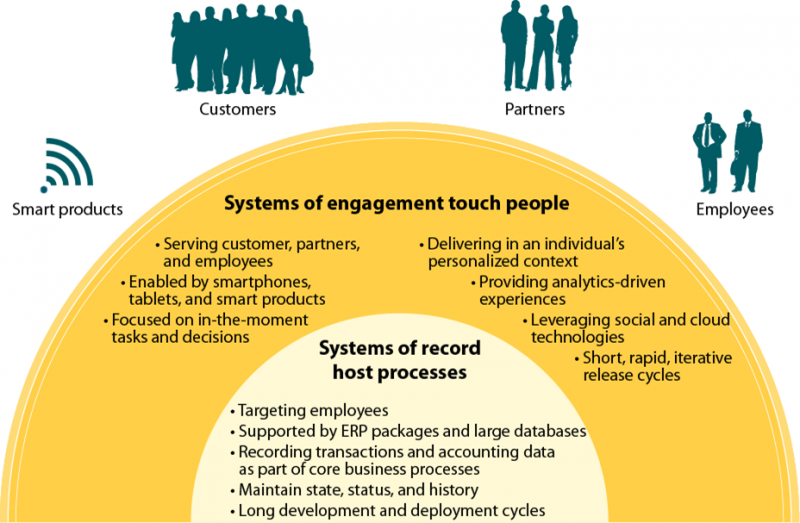Mobile World Congress Barcelona 2012: Understanding The Engagement Context
Starting Monday, there will be a cavalcade of announcements at the Mobile World Congress in Barcelona. While many suppliers will continue the phone and tablet hardware arms race, it is more important to understand what is really going on here: mobile engagement. Ted Schadler and I have just finished a report for Forrester clients, “Mobile Is The New Face Of Engagement,” that provides the background to put these announcements into context. The report makes clear that mobile is not simply another device for IT to support with a shrunken website or a screen-scraped SAP application. Rather, mobile is the manifestation of a much broader shift to new systems of engagement. These systems of engagement help firms empower their customers, partners, and employees with context-aware apps and smart products (see the figure below).
So as you walk the show floor or read about the announcements, think differently about what you are seeing:
- Are the tools just first-gen screen-scraping/tiny Web or do they really leverage context — the person’s location, preferences, and history — to engage? There will be a bevy of software products that help firms slim down their websites for viewing on mobile devices, but the real innovation will come from tools and engagement platforms that use predictive analytics and social feedback to create a full context that better serves customers and employees.
- Are the hardware announcements kicking off another round of the device wars or a new generation of smart products powered by apps? In addition to the latest Android, RIM, and Windows Mobile press releases, there will be a whole new set of smart cars, appliances, and other products where mobile apps provide key features by taking advantage of smart product APIs.
- Are the apps first-generation repackagings of the Web or are they true systems of engagement that leverage context from the device and other systems? The key to systems of engagement is assembling context across a broad array of sources: the device, the smart products connected to them, social connections, legacy systems with transaction and order histories, and cloud-based services. For example, retailers will use analytics apps to create a mosaic of context that surfaces special shopping offers in the moment.
- Is the middleware just about rehabbing legacy apps or is it mobile-ready, task-specific, and Internet-connected? In order to deal with the explosion of activities and transactions from mobile apps, firms will have to atomize their processes and middleware. To address the diversity of devices and last-mile connectivity issues, firms will rely on broader array of as-a-service offerings at the app, services, and connectivity levels.
If you come across these things, shoot us an email at jmccarthy (atatat) forrester (you know) com.
